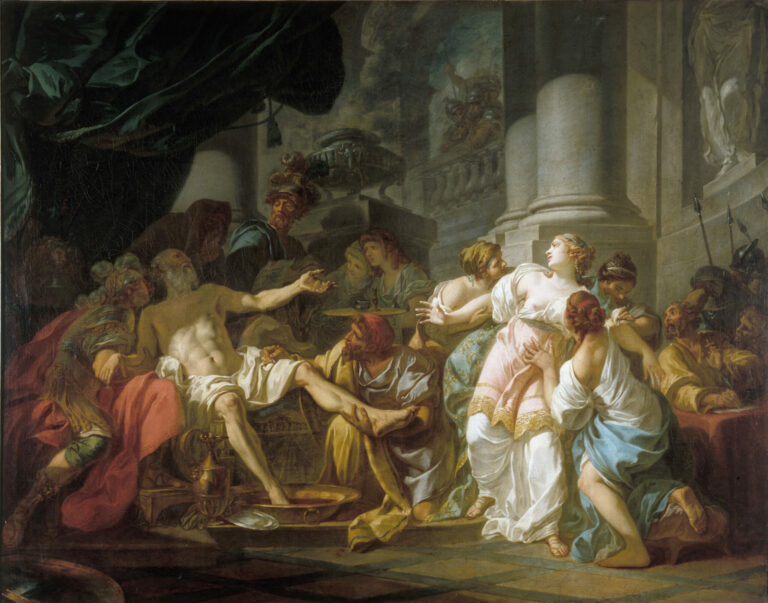David
Jacques-Louis David (1748-1825) was born in Paris to a bourgeois family and trained at the Royal Academy of Painting and Sculpture. After winning the prestigious Prix de Rome in 1774, he traveled to Italy where he discovered ancient art and developed his characteristic neoclassical style. Upon his return to France, he quickly established himself as the leader of the neoclassical movement with major works such as “The Oath of the Horatii” (1784) and “Brutus” (1789), which combined technical virtuosity, compositional rigor, and moral messages drawn from ancient history.
A witness and participant in his era, David put his art at the service of the political upheavals of his time. A fervent revolutionary, he became the official painter of the Republic and immortalized the great revolutionary episodes, notably with “The Tennis Court Oath” and “The Death of Marat” (1793). Under the Empire, he rallied to Napoleon and created his most famous imperial portraits, including “The Coronation of Napoleon” (1807). Exiled to Belgium after the Emperor’s fall, he completed his career there, leaving behind a considerable body of work that profoundly marked European art and trained an entire generation of painters, from Ingres to Gros.


